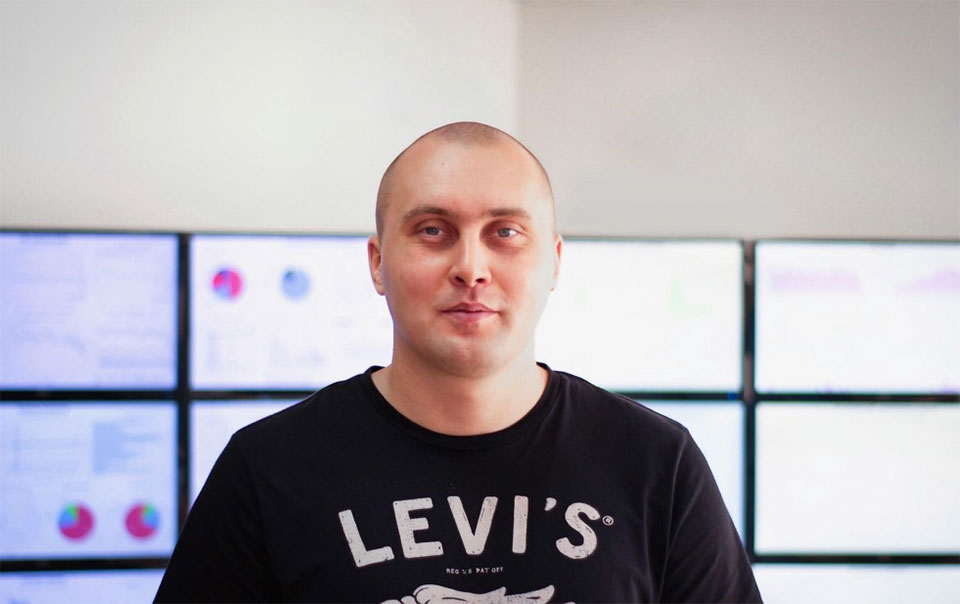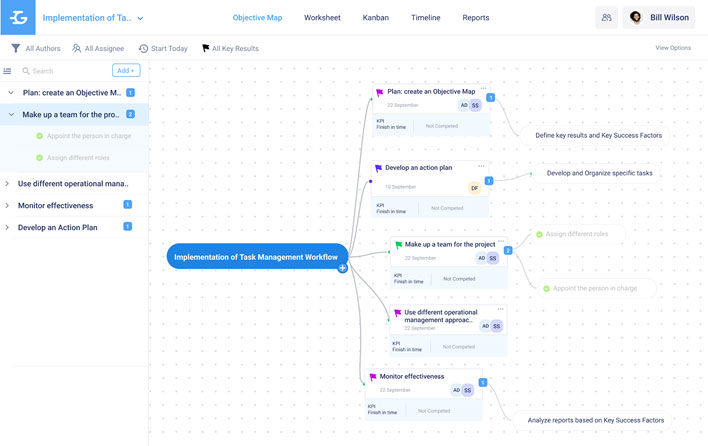Drowning in Chaos – and Back to the Surface: How We Mastered Goal Setting and Created a New Product

You’d need to be insane to try to reinvent the wheel—and when I found myself the head of a newborn company, I was eager to weave proven best practices into our business management routine. In this endeavor, we implemented the Gantt chart and we used task trackers and other popular tools. We grew to be masters of planning, but we never managed to launch projects on time or achieve our business goals.
What was going wrong?
No matter how meticulously we assigned tasks to the team, all our efforts fell flat. At one point, we felt that chaos would soon devour our company. The only way out was a complete overhaul of the business to find the most critical problems.
We found that the first problem lay on the surface: as a production company, we worked simultaneously on multiple products, from the initial idea to the market launch. Team members juggled myriad tasks and could not keep up with the product needs. They would just select a random task from their list and start working, unaware of the bigger picture and the final goal.
Another problem was having no common objective to unite the team and no unified vision of what we needed to achieve.
Finally, we had no established communication practice between the team members and management. We tried to enhance effectiveness by micromanaging, but the situation not only remained unimproved; after five years in business, our revenue shrank twice and we started losing employees and the market initiative.
Shrinking revenue and losing traction in business was a wake-up call. We discarded all our established task management systems and went back to the roots—to our business mission and objectives. Instead of individual tasks, we focused on goals we wanted to achieve in any aspect of our operations. Then we invited the team to discuss the best ways to achieve the goals.
That focus on two fundamental human activities—communicating and achieving goals—became a solid basis for our new approach…and later, a new product. The first period of working within the new framework was quite challenging for everyone, but after several weeks, the team developed critical thinking in assessing the goals and how to achieve them. That was a turning point for our company, and the logical step forward was to upgrade an internal tool we created to a full-fledged mass application – Goals.
The Duality of Effective Task Management
Inspired by the Management by Objectives approach by Peter Drucker, we based our application on setting clear objectives for the whole company, its divisions, and employees. Peter Drucker’s understanding of goals as measurable and achievable results also prompted us to see a complete goal tracking system as a duality of goal setting and evaluation.
The Golden Circle of Goal Setting
Simon Sinek’s triad “Why? What? How?” is a tremendously popular model to explain the mechanics of effective communication. Though it is well known that the Why? motivates both the team and outsiders, most people focus on What they are doing and How they plan to do it. Shifting the focus to the Why aspect of the task gives meaning to the team’s work and rekindles their motivation and creativity.
We now incorporate this principle into our planning and task-setting processes. At first, when we develop the Objective Map for your project, we define key results and connections between them: what is the specific problem we aim to solve (the why), what are the objectives we plan to achieve in order to do that, how does achieving one goal contribute to another, and what is their place in the overall product roadmap? When the initial objective map is sketched, we draft an action plan. Any action plan consists of several tasks that need to yield certain results. One by one, we decompose each task to specific actions and build a hierarchical Goal Tree:
Planning is, of course, merely one facet of effective task management: no matter how brilliant your plan is, it can lead nowhere unless you have tools to measure progress and monitor the status of tasks.
To run a business, you need to monitor and assess the business process’s success or failure with quantified measures. We developed Key Success Factors (not to be confused with Sinek’s method of asking why, what, how) to triangulate the effectiveness of a process:
- Key Performance Indicators (KPIs). Depending on the business process, KPIs define the expected result in any applicable format: quantitative, qualitative, or logical.
- Time frame. Setting soft and hard deadlines to achieve a result and thentracking the planned and the actual time spent on a certain task helps managers monitor and adjust the team’s development speed.
- Money. A goal is feasible only if it can be achieved within a certain budget. Comparing actual funds spent on every related task against the planned budget is a solid measurement for effectiveness.
Taking these aspects into account, any goal becomes a simple formula:
What should be done + When it should be done + How much it should cost
Fostering Communication and Teamwork
As we saw in our business, a task management system is nothing but a mechanical toy, and it is the team that breathes life into it. Instead of micromanaging our employees, we shifted our focus to establishing effective communication. Any group communication has two sides: leadership and teamwork, and teamwork is only effective if the team shows initiative and critical thinking.
Personal initiative, as defined by Michael Frese and his colleagues, is “taking an active and self-starting approach to work and going beyond what is formally required in a given job”. We decided to provide our team with the full picture organized in an objective map and decomposed into separate actions. We then gave them the freedom to choose the best way to achieve their objective. Seeing this both as freedom and responsibility, our team members gradually learned to trust one another and the management with potential problems, select the optimal path and “think on their feet.”
Task Management Workflow
The treatment of any business operation as a goal/result pair allows us to organize all business processes as an elegant and logical flow, no matter which division it is for. In all cases, there is a hierarchy of steps to take to define and execute effective action:
- Plan: you need to create an Objective Map, define key results and Key Success Factors, and establish connections between them;
- Organize: go one level down and develop an action plan populated with specific tasks;
- Staff: make up a team for the project, assign different roles, and appoint the person in charge;
- Direct: you are free to choose different operational management approaches: Kanban or Timeline, you can split the process into sprints to be more agile, but you will need to keep all tasks up-to-date and visible;
- Control: monitor effectiveness and analyze reports based on Key Success Factors;
- Decide: make informed business decisions and maintain order in your business.
When work processes become disorganized or ineffective and chaos threatens, ensure that your teams understand the goals and objectives they are working toward and empower them to use their own initiative in problem-solving. Use strong communication and measurable outcomes to encourage and control productivity. Once these measures are in place, management can make energized and informed decisions to keep your company on track.
Bring the best of the CEOWORLD magazine's global journalism to audiences in the United States and around the world. - Add CEOWORLD magazine to your Google News feed.
Follow CEOWORLD magazine headlines on: Google News, LinkedIn, Twitter, and Facebook.
Copyright 2025 The CEOWORLD magazine. All rights reserved. This material (and any extract from it) must not be copied, redistributed or placed on any website, without CEOWORLD magazine' prior written consent. For media queries, please contact: info@ceoworld.biz









